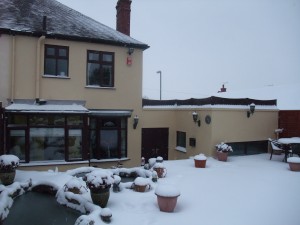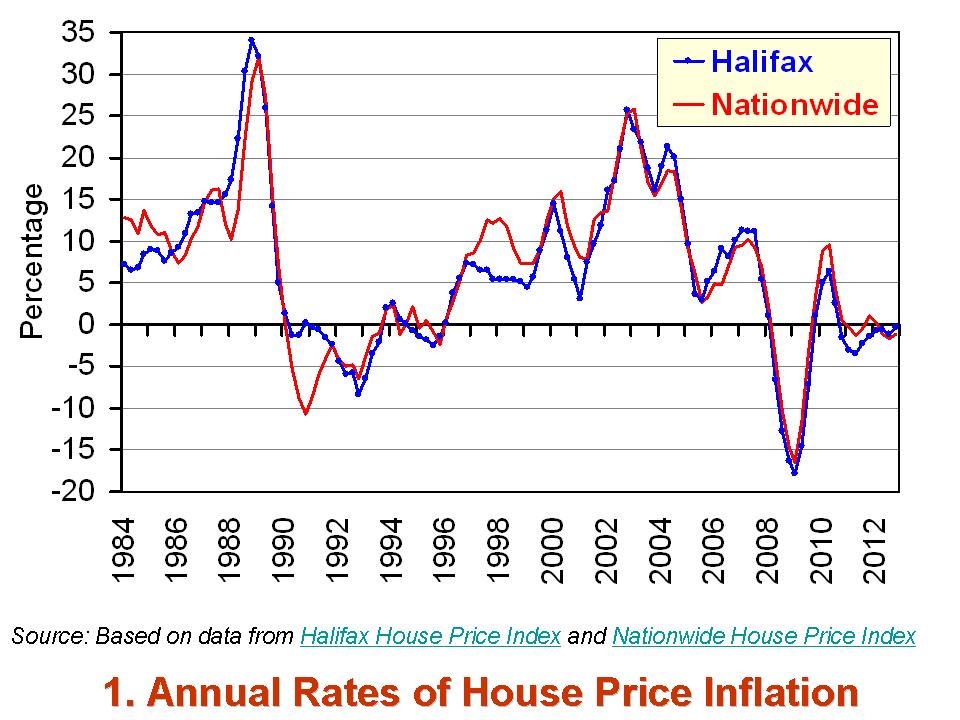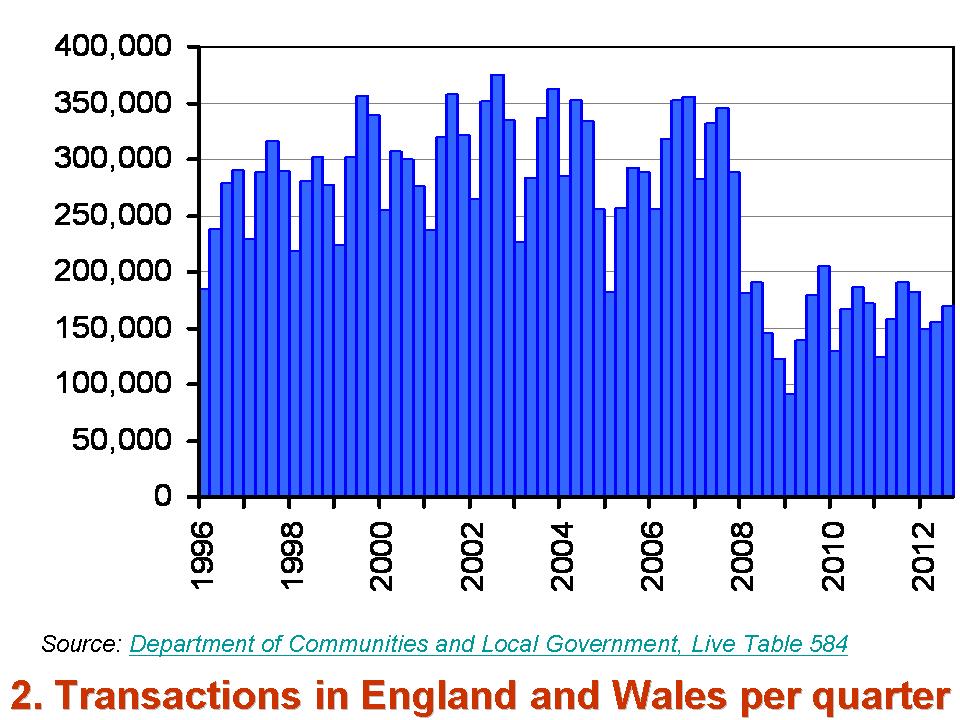 The housing market is an incredibly fascinating market to monitor and to research. The market was at the centre of the financial crisis with some lenders accused of over-aggressively expanding their mortgage books and relaxing their lending criteria. The UK housing market of today looks very different to the market before the financial crisis. Nationally, house prices are stagnant while transaction numbers are less than half their pre-crisis level. The UK housing market appears almost as ‘cold’ as the recent weather!
The housing market is an incredibly fascinating market to monitor and to research. The market was at the centre of the financial crisis with some lenders accused of over-aggressively expanding their mortgage books and relaxing their lending criteria. The UK housing market of today looks very different to the market before the financial crisis. Nationally, house prices are stagnant while transaction numbers are less than half their pre-crisis level. The UK housing market appears almost as ‘cold’ as the recent weather!

As the first chart shows, the annual rate of house price inflation across the UK has been consistently close to or even below zero over the past couple of years. The latest figures from the Nationwide Building Society point to the average UK house price in the final quarter of 2012 being 1.1 per cent lower than in the final quarter of 2011. The figures from the Halifax concur with their estimate showing UK house prices 0.3 per cent lower year-on-year in the final quarter of 2012. This is a very different picture from that during the 2000s. As recently as 2007, the annual rate of house price inflation was in excess of 10 per cent.
 Another indicator of the changing face of the UK housing market is the level of activity. The second chart shows the number of transactions per quarter across England and Wales since 1996. The figures from the Department of Communities and Local Government show that since the start of 2010 England and Wales has seen an average of 159,000 transactions per quarter. This compares with an average of 294,000 transactions over the period from 1996 to the end of 2007. Hence, the number of purchases today is roughly half the level prior to the financial crisis.
Another indicator of the changing face of the UK housing market is the level of activity. The second chart shows the number of transactions per quarter across England and Wales since 1996. The figures from the Department of Communities and Local Government show that since the start of 2010 England and Wales has seen an average of 159,000 transactions per quarter. This compares with an average of 294,000 transactions over the period from 1996 to the end of 2007. Hence, the number of purchases today is roughly half the level prior to the financial crisis.
 A further indicator of today’s very different housing market is the numbers of approvals by lenders for mortgages for house purchases. The latest Bank of England figures show that across the UK, the number of approvals each month in the first eleven months of 2012 averaged 51,000. Since 2010, the average monthly number of approvals has been 49,000. However, over the period from 1996 to the end of 2007 there were over 102,000 mortgages being approved each month.
A further indicator of today’s very different housing market is the numbers of approvals by lenders for mortgages for house purchases. The latest Bank of England figures show that across the UK, the number of approvals each month in the first eleven months of 2012 averaged 51,000. Since 2010, the average monthly number of approvals has been 49,000. However, over the period from 1996 to the end of 2007 there were over 102,000 mortgages being approved each month.
A trawl through some of the key indicators of the UK housing market helps to paint a picture of a market that is markedly different to that before the financial crisis. It would be a big surprise in today’s financial and economic climate if there were to be any significant change in the path of these indicators for some time.
Data
Statistical data set – Property transactions Department of Communities and Local Government
Nationwide house price index Nationwide Building Society
Halifax House Price Index Lloyds Banking Group
Lending to individuals – November 2012 Bank of England
Articles
UK house prices drop 1% Guardian, Hilary Osborne (3/1/13)
House prices on course to pass pre-crisis peak levels Telegraph, Roland Gribben (21/1/13)
House prices rise at highest rate in seven months Independent, Vicky Shaw (15/1/13)
UK mortgage market ‘now more robust’ BBC News, (21/1/13)
Bank of England report flags improving mortgage market Telegraph, Emma Rowley (21/1/13)
Questions
- Draw up a list factors that are likely to have affected each of our 3 indicators of the UK housing market (house price inflation, transactions and mortgage approvals) since the late 2000s.
- Using a demand-supply diagram, illustrate the forces that have affected house prices in the late 2000s and early 2010s.
- Draw up a list of issues surrounding the housing market that would be of interest to a microeconomist. Now repeat the exercise for a macroeconomist.
- Why are house prices so notoriously volatile? Can you think of any other markets where prices are similarly volatile? Do these markets share any common traits?
- If you were a commentator on the UK housing market what would you be forecasting for prices and activity in 2013?
This week has seen the publications of two sets of forecasts on the UK housing market in 2011. The first of these came from Rightmove. It is forecasting that house prices next year could fall by as much as 5%. The extent of the fall though is argued to dependent, in part, on any rise in the Bank of England’s base rate and the number of properties taken into possession by lenders. These two factors are, of course, linked because higher debt-servicing costs can contribute to repossessions as the affordability of mortgages decrease. An increase in what are termed ‘forced sales’ will add to Rightmove’s general expectation of over-supply of property.
Righmove are expecting considerable local variations in house prices as a result of local demand and supply conditions. This makes forecasting a national average house price change extraordinarily difficult. It argues that the extent to which potential buyers are credit-constrained or to which demand is ‘credit crunch resistant’ varies across the country. This coupled with variations in the amount of supply to local markets will contribute to considerable differences in house price movements with house prices being ‘underpinned’ in some markets.
Rightmove is expecting the number of properties coming on to the housing market in 2011 to be around 1.2 million, 10% lower than in 2010. However, it is expecting only around 600,000 transactions which is close to half the historic average.
The second set of housing market forecasts this week was published by the Council of Mortgage Lenders (CML). The CML is forecasting that low interest rates will help to underpin current house price values with ‘flat or modestly falling house prices’. They argue that that while recent house price weakness will persist they ‘do not foresee any sharp fall in prices’. The CML are not expecting large numbers of buyers to hold off from looking to buy, but acknowledge there is uncertainty about the availability and cost of mortgage funding.
One contributing factor to the uncertainty surrounding the quantity and price of mortgages is the end to the Bank of England’s Special Liquidity Scheme (SLS). The SLS allowed banks to swap for a period of up to 3 years financial assets, such as mortgage-backed securities (a security representing a claim on the cash flows from mortgage loans), for UK Treasury Bills (short-term government debt). The scheme was designed to provide the banking system with liquidity. The last swaps will expire in January 2012. The CML reports that currently about £130 billion needs to be repaid by banks. More generally, of course, financial institutions are likely in 2011 to continue repairing and rebalancing their balance sheets and this is likely to impact on their lending decisions.
We noted how the Rightmove house price forecast for 2011 was partly dependent on those forced sales arising from repossessions. The CML is expecting what it terms a ‘modest increase’ in the number of possessions from around 36,000 this year to 40,000 next year. The CML though expects the number of transactions in 2011 to be a little higher than Rightmove, albeit still historically low at around 860,000.
All in all, activity levels in the housing and mortgage markets in 2011 are expected to be relatively subdued. This coupled with the expectation that house prices will be lower in 2011 suggests a very sober outlook indeed for the UK housing market. Happy New Year!
Articles
Lenders forecast flat house prices Financial Times, Norma Cohen (14/12/10)
UK mortgage lending to fall to 30-year low Telegraph, Steven Swinford (15/12/10)
Repossessions to rise in 2011, lenders forecast BBC News (15/12/10)
Market freeze: Homes sold once in 20 years Sky News, Hazel Baker (15/12/10)
U.K. mortgage lending may decline by a third in 2011 as weakness persists Bloomberg, Scott Hamilton (15/12/10)
House prices fall faster as estate agent predicts worse to come Telegraph, Ian Cowie (13/12/10)
Home sellers warned to drop asking price by 5% if they want to find a buyer Daily Mail, Becky Barrow (13/12/10)
U.K. home sellers may cut prices by as much as 5% in 2011 after December drop Bloomberg, Scott Hamilton (13/12/10)
Housing market forecasts
Rightmove’s housing market forecasts can be found within the December 2010 edition of its House Price Index
Rightmove December 2010 House Price Index (13/12/10)
CML publishes 2011 market forecasts CML News and Views, Issue 24 (15/12/10)
Questions
- Compare and contrast the Rightmove and CML house price forecasts for 2011. How similar are the stories underpinning their forecasts?
- What do you understand by forced sales? Using a demand-supply diagram explore how an increase in properties taken into possession could impact on house prices in 2011.
- What do you think affordability means in the context of housing? How might we measure this?
- What factors do you think might impact on the price and availability of mortgage finance in 2011?
- What do you understand to be the purpose of the Bank of England’s Special Liquidity Scheme. Using a demand-supply diagram explore how the termination of the scheme early in 2012 could impact on house prices in 2011.
- What do you think Rightmove means by ‘credit crunch resistant’ housing demand?
- Can demand-supply analysis help to explain how house prices pressure could vary from one area to another? Explain your answer using appropriate diagrams.
 The housing market is an incredibly fascinating market to monitor and to research. The market was at the centre of the financial crisis with some lenders accused of over-aggressively expanding their mortgage books and relaxing their lending criteria. The UK housing market of today looks very different to the market before the financial crisis. Nationally, house prices are stagnant while transaction numbers are less than half their pre-crisis level. The UK housing market appears almost as ‘cold’ as the recent weather!
The housing market is an incredibly fascinating market to monitor and to research. The market was at the centre of the financial crisis with some lenders accused of over-aggressively expanding their mortgage books and relaxing their lending criteria. The UK housing market of today looks very different to the market before the financial crisis. Nationally, house prices are stagnant while transaction numbers are less than half their pre-crisis level. The UK housing market appears almost as ‘cold’ as the recent weather!
 Another indicator of the changing face of the UK housing market is the level of activity. The second chart shows the number of transactions per quarter across England and Wales since 1996. The figures from the Department of Communities and Local Government show that since the start of 2010 England and Wales has seen an average of 159,000 transactions per quarter. This compares with an average of 294,000 transactions over the period from 1996 to the end of 2007. Hence, the number of purchases today is roughly half the level prior to the financial crisis.
Another indicator of the changing face of the UK housing market is the level of activity. The second chart shows the number of transactions per quarter across England and Wales since 1996. The figures from the Department of Communities and Local Government show that since the start of 2010 England and Wales has seen an average of 159,000 transactions per quarter. This compares with an average of 294,000 transactions over the period from 1996 to the end of 2007. Hence, the number of purchases today is roughly half the level prior to the financial crisis. A further indicator of today’s very different housing market is the numbers of approvals by lenders for mortgages for house purchases. The latest Bank of England figures show that across the UK, the number of approvals each month in the first eleven months of 2012 averaged 51,000. Since 2010, the average monthly number of approvals has been 49,000. However, over the period from 1996 to the end of 2007 there were over 102,000 mortgages being approved each month.
A further indicator of today’s very different housing market is the numbers of approvals by lenders for mortgages for house purchases. The latest Bank of England figures show that across the UK, the number of approvals each month in the first eleven months of 2012 averaged 51,000. Since 2010, the average monthly number of approvals has been 49,000. However, over the period from 1996 to the end of 2007 there were over 102,000 mortgages being approved each month.